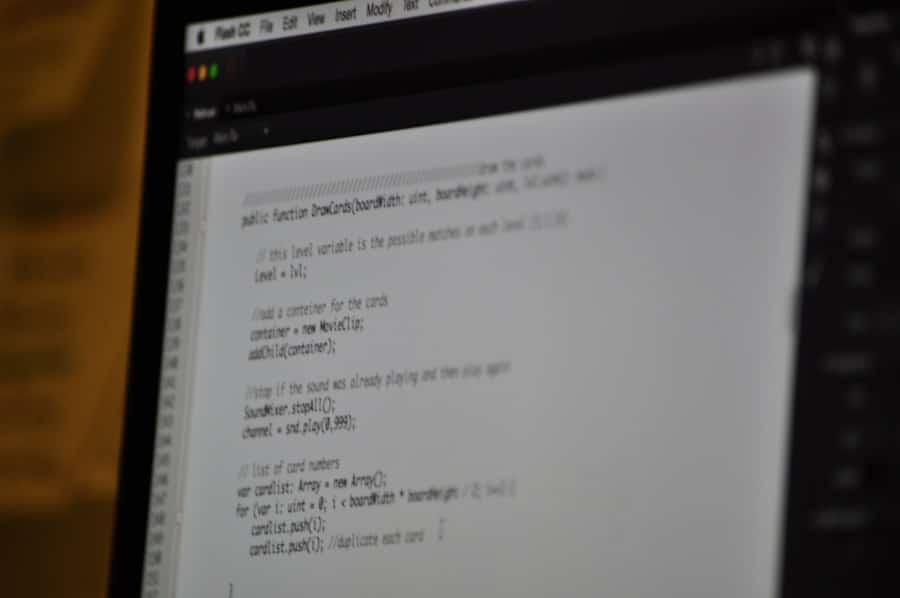In the modern educational landscape, the necessity for technology has become increasingly pronounced. Students, whether in high school or pursuing higher education, require reliable devices that can support their academic endeavors. Budget laptops have emerged as a popular choice for students, offering a balance between affordability and functionality.
These devices are designed to cater to the diverse needs of learners, from taking notes in class to conducting research and completing assignments. As educational institutions continue to integrate technology into their curricula, the demand for budget-friendly laptops has surged, making it essential for students and parents alike to understand what options are available. The appeal of budget laptops lies not only in their price but also in their ability to perform essential tasks efficiently.
With a plethora of options on the market, students can find laptops that meet their specific requirements without breaking the bank. However, navigating through the myriad of choices can be daunting. This article aims to provide a comprehensive overview of budget laptops tailored for students, highlighting key features to consider, top models available in 2025, and factors that influence performance and usability.
By understanding these elements, students can make informed decisions that align with their academic needs and financial constraints.
Key Takeaways
- Budget laptops are a cost-effective option for students who need a reliable and affordable device for their studies.
- Key features to look for in a budget laptop include a durable build, long battery life, sufficient storage and memory, and a decent processor for multitasking.
- The top budget laptops for students in 2025 include models from brands like HP, Dell, Lenovo, and Acer, offering a balance of performance and affordability.
- When comparing performance and battery life, it’s important to consider the specific needs of the student, such as gaming, video editing, or basic productivity tasks.
- Design and portability considerations for budget laptops include weight, size, and durability, as students often need to carry their laptops to and from classes.
Key Features to Look for in a Budget Laptop
When selecting a budget laptop, several critical features should be prioritized to ensure that the device meets the demands of student life. First and foremost, processing power is essential. A laptop equipped with at least an Intel Core i3 or AMD Ryzen 3 processor is recommended for handling everyday tasks such as word processing, web browsing, and streaming educational videos.
These processors provide sufficient power for multitasking without causing significant slowdowns, which is crucial during busy study sessions. Another vital aspect to consider is the amount of RAM.
This is particularly important for students who may need to have a web browser open alongside productivity software like Microsoft Office or Google Workspace. Additionally, storage type and capacity play a significant role in overall performance. Solid State Drives (SSDs) are preferable over traditional Hard Disk Drives (HDDs) due to their faster read and write speeds, which result in quicker boot times and application launches.
A minimum of 256GB SSD storage is advisable to accommodate documents, software, and media files.
Top Budget Laptops for Students in 2025
As we look ahead to 2025, several budget laptops stand out as excellent choices for students seeking reliable and affordable options. One notable contender is the Acer Aspire 5, which combines a sleek design with robust performance features. Equipped with an AMD Ryzen 5 processor and 8GB of RAM, this laptop can handle demanding tasks with ease.
Its 15.6-inch Full HD display provides vibrant visuals, making it suitable for both studying and entertainment. Additionally, the Aspire 5 boasts an impressive battery life of up to 10 hours, ensuring that students can work through long days without needing to recharge. Another strong option is the Lenovo IdeaPad 3, which offers a compelling mix of performance and affordability.
Featuring an Intel Core i3 processor and 8GB of RAM, this laptop is well-suited for everyday tasks such as browsing the internet and using productivity software. The IdeaPad 3 also includes a comfortable keyboard and a decent selection of ports, including USB-C and HDMI, making it versatile for various connectivity needs. With its lightweight design and solid build quality, this laptop is an excellent choice for students who need a reliable device that can easily be transported between classes.
Performance and Battery Life Comparison
When evaluating budget laptops for students, performance and battery life are two critical factors that often dictate usability. Performance can be assessed through various benchmarks that measure processing speed, graphics capabilities, and multitasking efficiency. For instance, laptops equipped with Intel’s latest generation processors tend to outperform older models significantly in both single-core and multi-core tasks.
This is particularly relevant for students who may need to run resource-intensive applications such as video editing software or programming environments. Battery life is equally important, especially for students who spend long hours on campus or in libraries without access to power outlets. A laptop that can last through a full day of classes without needing a charge is invaluable.
Many budget laptops now offer battery life ranging from 8 to 12 hours on a single charge, which is more than sufficient for most academic schedules. For example, the HP Pavilion x360 has garnered attention for its impressive battery longevity while maintaining solid performance metrics. Students should consider their daily routines when assessing battery life; those who frequently travel or attend back-to-back classes will benefit from devices that prioritize endurance.
Design and Portability Considerations
The design and portability of a laptop are crucial elements that can significantly impact a student’s experience. A lightweight laptop with a slim profile is ideal for students who need to carry their devices around campus regularly. Many budget laptops now feature designs that prioritize portability without sacrificing durability.
For instance, models like the ASUS VivoBook series are known for their sleek aesthetics and lightweight construction, making them easy to slip into a backpack. In addition to weight and size, build quality should not be overlooked. Students often face the rigors of daily use, so a laptop that can withstand minor bumps and drops is essential.
Materials such as aluminum or high-quality plastic can enhance durability while keeping the device lightweight. Furthermore, keyboard comfort and trackpad responsiveness are vital for long study sessions; therefore, students should consider these factors when testing potential purchases in-store or through reviews online.
Connectivity and Compatibility with Student Needs
Ports for Peripherals
A budget laptop should come with multiple ports to accommodate different peripherals such as external hard drives, USB flash drives, and HDMI cables for connecting to projectors or external displays. The increasingly popular USB-C ports provide versatility for charging and data transfer.
Wireless Connectivity Options
Wireless connectivity options like Wi-Fi 6 support are vital for fast internet access in crowded environments like libraries or lecture halls. This technology enables multiple devices to connect simultaneously without sacrificing speed. Additionally, Bluetooth capability allows for seamless connections with accessories like wireless headphones or mice, enhancing the overall user experience.
Assessing Connectivity Needs
When selecting a budget laptop, students should assess their specific connectivity needs based on their coursework requirements and personal preferences.
Value for Money: Comparing Prices and Features
When it comes to budget laptops, value for money is a critical consideration that goes beyond just the initial purchase price. Students must evaluate how well a laptop’s features align with their academic needs relative to its cost. For instance, while some models may be priced lower due to outdated components or limited capabilities, others may offer superior performance at a slightly higher price point.
To make an informed decision, students should compare specifications across different models within their budget range. Websites that aggregate reviews and benchmarks can provide valuable insights into how various laptops perform under real-world conditions. Additionally, considering warranty options and customer support services can also factor into the overall value proposition; a laptop that comes with an extended warranty may save money in the long run if repairs are needed.
Making the Best Choice for Your Student Laptop
Selecting the right budget laptop involves careful consideration of various factors including performance specifications, design elements, connectivity options, and overall value for money. By understanding these aspects in depth, students can make informed choices that will serve them well throughout their academic journeys. The landscape of technology continues to evolve rapidly; therefore, staying updated on the latest models and features will empower students to choose devices that not only meet their current needs but also adapt to future demands as they progress in their studies.
Ultimately, investing time in research before making a purchase can lead to significant benefits down the line—ensuring that students have reliable tools at their disposal as they navigate the challenges of education in an increasingly digital world.
If you’re a student looking for the best budget laptop in 2025, you may also be interested in learning about the best tablet to buy for everyday use. Enicomp has a helpful article discussing this topic, which can provide additional insight into choosing the right device for your needs.




